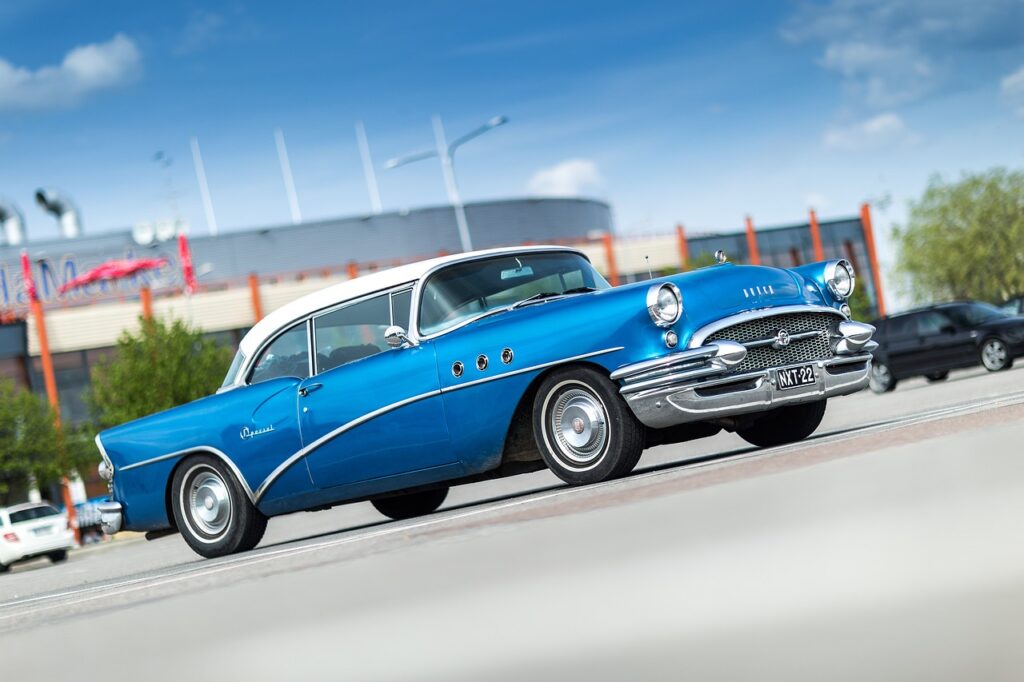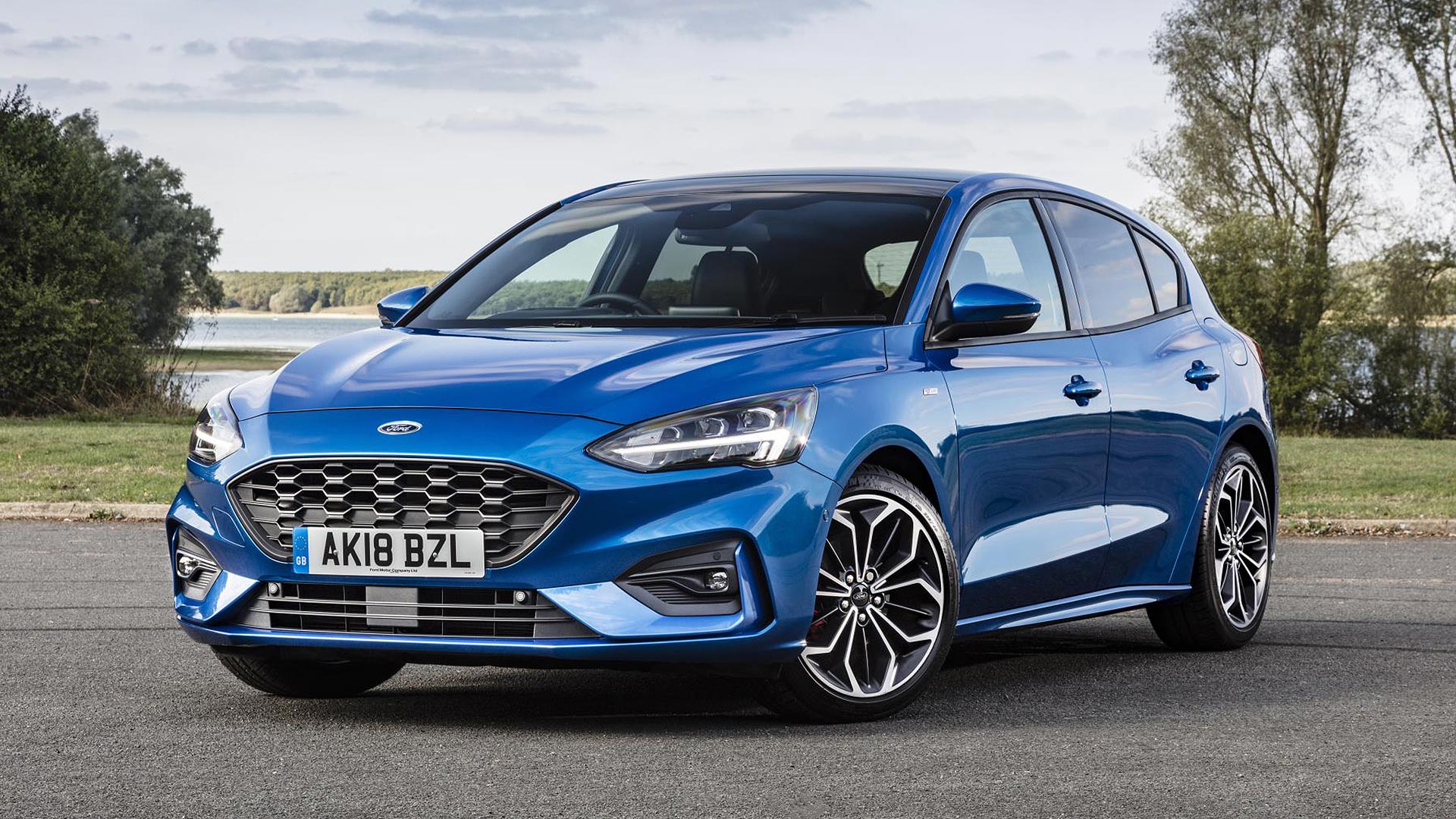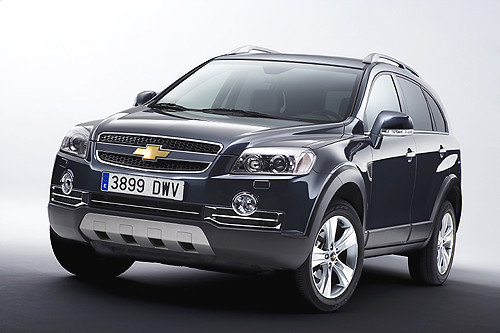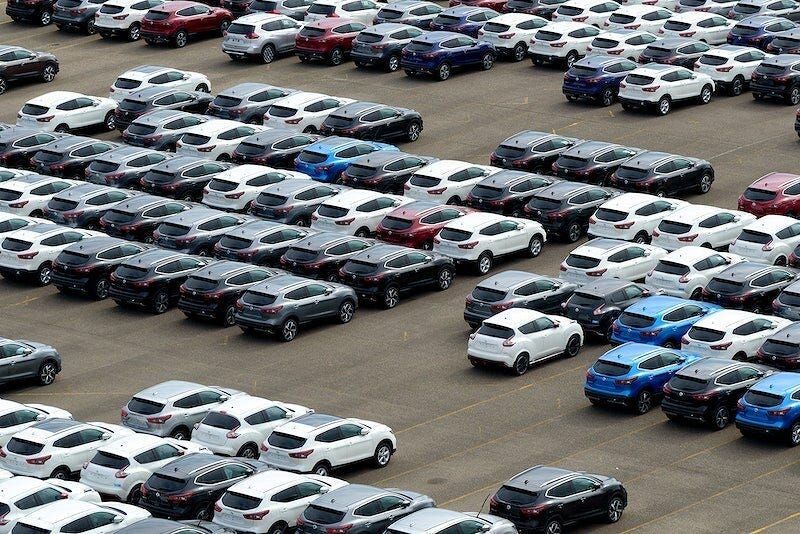
For many American households, a motor vehicle represents the second most significant asset, trailing only their home. Yet, the financial implications of car ownership extend far beyond the initial purchase price, loan payments, or even fuel and insurance. There’s a silent, often overlooked, cost that quietly chips away at your investment: car depreciation.
Depreciation is not merely an abstract accounting term; it’s the single largest expense associated with owning a vehicle for most people, frequently dwarfing what you spend on gasoline, maintenance, or even insurance. Understanding this fundamental concept is paramount to making astute financial decisions, whether you’re buying a brand-new vehicle, considering a used model, or planning to sell your current car.
This in-depth guide is designed to empower you with the knowledge and practical tools to decode car depreciation. We’ll break down everything from its core definition and immediate impact to the intricate factors that influence it, offering clear, actionable advice to help you navigate this complex financial landscape and ultimately save thousands of dollars over your driving lifetime. Let’s embark on this journey to master the true cost of your car’s value decline.
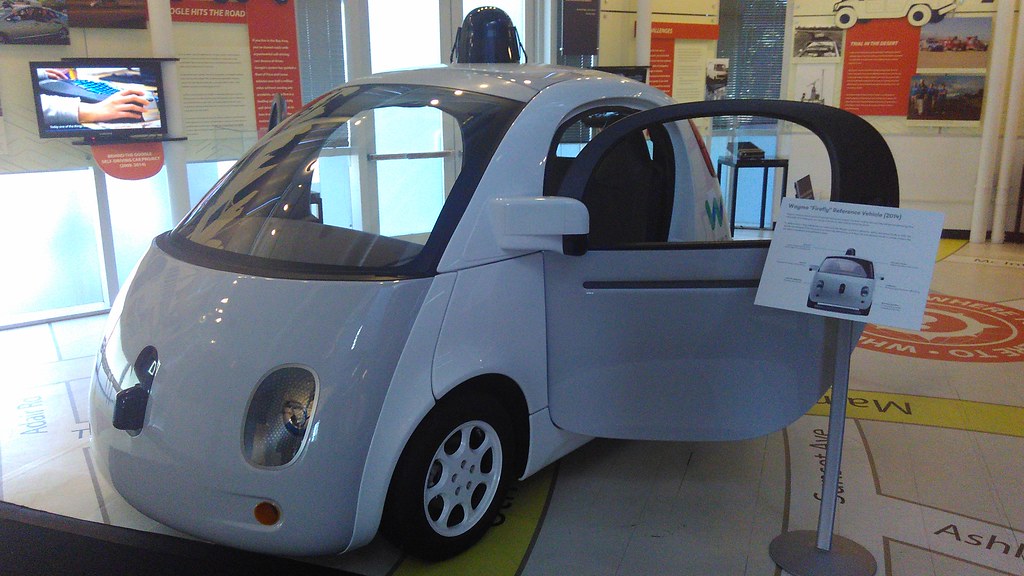
1. **Understanding Car Depreciation: The Core Definition**At its heart, depreciation is a straightforward concept: it’s the decrease in the value of an asset over time. When we apply this to vehicles, it means that the moment you buy a car, its worth begins to diminish. It’s an inevitable truth of car ownership that no vehicle retains its original value indefinitely, or even for very long, once it leaves the dealership lot.
To illustrate this, imagine you “bought a car for $20,000. After a few years, the vehicle is not what it used to be in the beginning. You will probably agree that selling it for $20,000 again would not be especially fair – you have some sort of a gut feeling that it is worth much less now.” This gut feeling is precisely what economists refer to as depreciation – your car’s value has, quite simply, gone down over the years of its use and ownership.
Beyond this intuitive understanding, the more formal definition of depreciation states that “it is the method of calculating the cost of an asset over its lifespan.” This means depreciation isn’t just a market phenomenon; it’s an accounting principle designed to allocate the cost of an asset over the period it provides value. The main culprits behind this reduction in value “include car design aging, wear and tear.” These factors contribute significantly to a vehicle’s decreasing desirability and functional worth in the market over time.
Recognizing depreciation as a key financial element is crucial because, as the experts note, “People overlook depreciation, but it is the biggest cost of ownership in many cases.” When the time comes to sell your car or trade it in, the difference between what you initially paid and what you receive for it will largely be accounted for by depreciation. This is the financial reality that every car owner must confront.

2. **The Immediate Drop: How Fast Your Car Loses Value**One of the most surprising, and frankly, painful, aspects of car depreciation is how swiftly it begins. It’s not a gradual slide that eases in; it’s an immediate, significant drop the very moment you finalize your purchase. As the data shows, “the value of your car decreases to 91% of the initial market value the minute you purchase it.” This isn’t an exaggeration; it’s a cold, hard fact.
The reason for this sudden plunge in value is rooted in market perception. “At the moment you buy it, the car’s state moves from ‘new car’ to ‘used car’, and even though it’s been used for just one minute, its value drops significantly.” This instantaneous reclassification from ‘new’ to ‘used’ triggers an automatic, substantial reduction in its market worth. “According to Ramsey Solutions, a brand-new car loses around 9% of its value the moment you drive off the lot. That’s nearly a tenth of your purchase price gone in seconds!”
This initial shock is merely the beginning of a consistent decline. After the immediate ‘drive-off drop,’ the depreciation continues aggressively throughout the first year. “Most new cars lose around 20% to 25% in the first year” of ownership. This steep decline means a substantial portion of your investment is gone before you even make your first year’s worth of payments. Looking further, “a new car can lose 60% of its value in the first 3 years alone,” underscoring the rapid erosion of value in a vehicle’s early life.
The decline then progresses steadily year after year, albeit at a slightly slower pace than the initial months. Based on market data, a car’s value typically continues to fall as follows: “After a year, your car’s value decreases to 81% of the initial value. After two years, your car’s value decreases to 69% of the initial value. After three years, your car’s value decreases to 58% of the initial value. After four years, your car’s value decreases to 49% of the initial value. After five years, your car’s value decreases to 40% of the initial value.” These figures highlight a clear and predictable pattern of value reduction.
In the long term, this continuous depreciation eventually leads to a very low market value. “Our car depreciation calculator assumes that after approximately 10.5 years, your car will have zero value. Of course, you will still be able to sell it to individual buyers, but its market value will be extremely low.” While these are averages, and “in reality, each brand and model of a car loses its value at a slightly different rate,” the fundamental trajectory of value decline remains consistent across the board.
Read more about: Sorrow in Every Depreciation Drop: 15 Luxury Vehicles Drivers Admit They’d Unbuy to Save Money
3. **Decoding Depreciation: Key Factors Beyond Age**While the age of a vehicle is undeniably the “primary driver of depreciation,” it’s crucial to understand that numerous other factors significantly influence how quickly and severely your car’s value diminishes. These elements, often intertwined, paint a more complete picture of a car’s true worth at any given moment and offer levers for owners to potentially mitigate some of the losses.
One of the most impactful factors is mileage. “Mileage is one of the biggest factors” in determining a car’s resale value. Standard industry assumptions place the average annual mileage at around “20,000 km or 12,000 miles per year.” If your vehicle accrues miles faster than this average, its value will drop at an accelerated rate. For instance, “a 5-year-old car with double the average mileage may lose another 10% to 15%” compared to a car with standard mileage. Conversely, “low mileage bonus: Up to 10% less depreciation for vehicles driven under 12,000 miles/year,” while “high mileage penalty: 0.3% additional depreciation per 1,000 miles over the standard 12,000/year.” This is evident in real-world scenarios, as seen with a low-mileage Ford Ranger mentioned in the context, where “the mileage adjustment helps offset the age-based depreciation. A 15-year-old truck with 60,000 miles is worth significantly more than one with 180,000 miles.”
Another critical component is the vehicle’s condition. This encompasses not just its mechanical state but also its aesthetic appeal, both inside and out. The better the condition, the less value it will lose, and potentially even gain some. According to the calculator’s adjustments, “Excellent: +5%,” “Fair: -10%,” and “Poor: -20%” in terms of value retention. This highlights the importance of regular maintenance, keeping up with cosmetic repairs, and generally caring for your vehicle. “Poor condition or missing maintenance records also lower resale value,” because prospective buyers will always prefer a well-maintained vehicle with a transparent history.
Accident history also casts a long shadow over a car’s value. Even seemingly minor incidents can leave a lasting financial mark. The data suggests that “even a small accident can reduce value by about 5%, and major accidents can cut it by 10% to 15%.” The calculator reflects this by applying specific penalties: “Minor accident: -5%” and “Major accident: -12%.” This ‘diminished value’ means that even after a car is professionally repaired, its market price will likely be lower than a comparable vehicle that has never been involved in an accident.
Finally, factors such as the car’s brand and body type play a role. Some manufacturers and vehicle segments are simply known for better value retention. The calculator notes, “Add brand and body factors. Some cars like Toyota, Honda, and Tesla hold value better, while others lose faster.” This reinforces the idea that strategic choices at the point of purchase can have long-term benefits in mitigating depreciation losses.
Read more about: Decoding True Cost to Own: 9 Critical Factors That Drain Your Wallet After Five Years of Vehicle Ownership
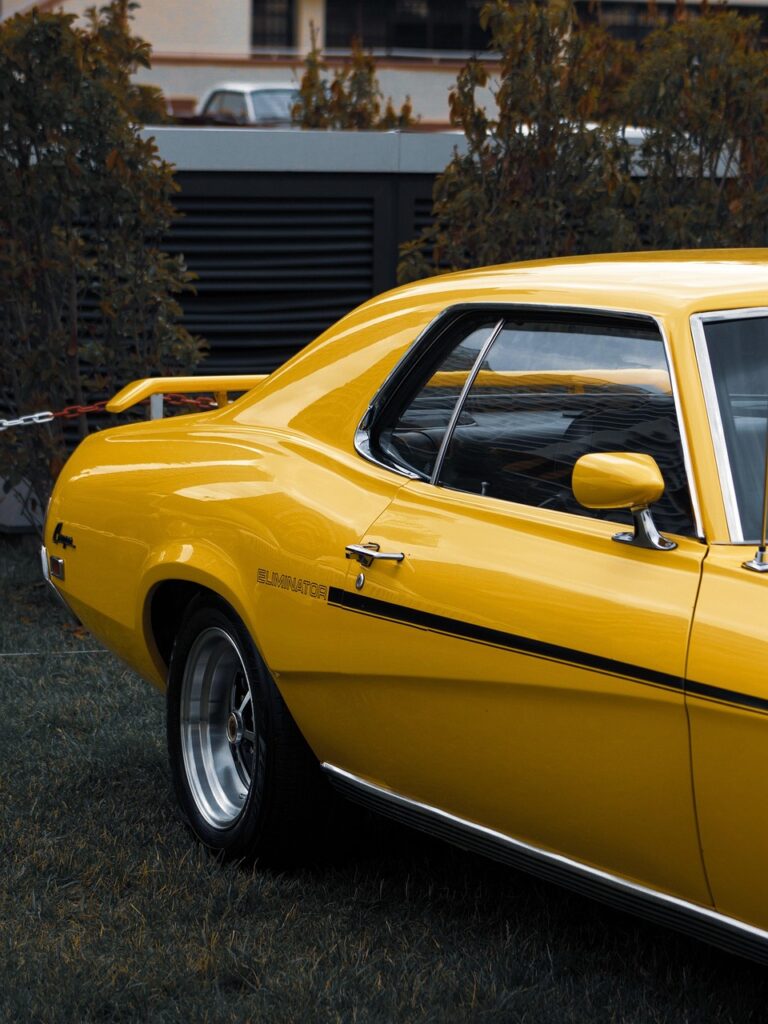
4. **Mastering the Numbers: How to Calculate Car Depreciation**Understanding depreciation on a theoretical level is helpful, but applying it practically to estimate your car’s value is where true financial empowerment lies. Many car owners simply “guess what their car is worth and end up leaving money on the table” when it comes time to sell or trade in. Fortunately, there are clear methods and tools available to calculate depreciation with precision.
At its core, calculating depreciation often relies on a fundamental formula. The Car Depreciation Calculator utilizes these principles: “A = P * (1 – R/100)^n” and “D = P – A.” In these equations, “A is the value of the car after n years,” “D is the depreciation amount,” “P is the purchase amount,” “R is the percentage rate of depreciation per annum,” and “n is the number of years after the purchase.” This formula allows you to project a car’s future value based on its initial price and an estimated annual depreciation rate.
Let’s walk through an example to see this formula in action. Suppose “The average car depreciation rate is 14% per year. If you purchase a car for $29000, what is the approximate value of the car after 5 years?” Using the formula: you start with P = $29,000, R = 14%, and n = 5. You calculate (1 – 0.14)^5, which is (0.86)^5, approximately 0.4704. Multiplying this by the purchase price, $29,000 * 0.4704, gives you “$13641.60.” So, after five years, your $29,000 car would be worth roughly $13,641.60, representing a significant loss in value.
Depreciation rates aren’t always constant, especially in the first year, which can be much steeper. Consider this scenario: “John purchased a new car for $30000. The value of the car depreciates by 35% in the first year and by 14% p.a. thereafter. How much will the car be worth after 3 years?” Here, the calculation is split. First, for the initial year, the value becomes $30,000 * (1 – 0.35) = $19,500. For the remaining two years, the 14% rate applies to this new value: $19,500 * (1 – 0.14)^2, which works out to “$14422.20.” This example highlights how varying depreciation rates impact the final value.
Beyond manual calculations, dedicated online tools like the car depreciation calculator simplify this process immensely. You can use such a calculator in two primary ways. “The first one is to input the initial car value – the new car purchase price. Then, the car depreciation calculator will automatically display the value after given periods of time listed in the previous paragraph.” This is ideal for quickly seeing the predicted value decline over standard periods. The “second method is estimating the initial value of the car.” For instance, “Let’s assume you were looking to buy a three-year-old car for $12,000. If you input the value into the ‘3 years’ box, the car depreciation calculator will display the car’s initial value – in this case, over $20,500.” This allows you to assess the original price and judge if the used car offers a good deal by comparing it to new car prices.
5. **Unveiling the True Price Tag: The Comprehensive Cost of Car Ownership**Buying a car is a momentous financial decision, often viewed as a singular, large expenditure. In 2018, for example, “the industry-wide estimated average cost of a brand-new car was around $36,000.” This substantial figure is why, for “many American families, a motor vehicle is the second most valuable asset (after the house),” and why many resort to loans or leases to finance their purchase. However, the true cost of car ownership extends far beyond this initial price tag or monthly payment, encompassing a spectrum of ongoing expenses that can significantly impact your overall financial health.
Apart from the actual cost of acquisition, whether financed or paid upfront, using a car comes with a host of additional, recurring expenses. The most prominent among these include “Registration costs; Insurance (motor insurance); Taxes (especially the sales tax); Fuel costs; Maintenance (regular service); and Parking (when on holidays, and during the rest of the year).” These line items accumulate over time, adding a considerable burden to your annual budget that many often underestimate when planning their vehicle purchase.
Crucially, among these various expenditures, a unique and often overlooked expense is “a kind of a specific, indirect cost of owning a car is also the depreciation of your vehicle.” This is not a cash payment you make monthly, but rather a loss of equity in your asset. Yet, its financial impact is profound, as “Depreciation is the largest cost of vehicle ownership for most people – often exceeding fuel, insurance, and maintenance combined.” This underscores why understanding and accounting for depreciation is not just an academic exercise but a practical necessity for smart financial planning.
To put these figures into perspective, official reports provide clear insights into the average total cost. “According to the report (Consumer Expenditures in 2017) released by the U.S. Department of Labor (Bureau of Labor Statistics), the average cost of owning and operating a motor vehicle is $9,576 per year.” This substantial yearly expense is typically broken down into several key categories:
Specifically, “$4,054 for the acquisition of the car (averaged yearly costs of depreciation, leasing payments, etc.); $1,968 spent yearly on gasoline and motor oil; and $3,554 in other expenses related to owning and using the vehicle.” These figures clearly illustrate that the ‘acquisition cost,’ heavily influenced by depreciation, accounts for a significant portion of the total yearly outlay. Another corroborating statistic from “the American Automobile Association says that the average yearly cost of owning a car is $8,849. It includes gasoline, maintenance, insurance, license and registration, loan finance charges, and depreciation costs. This number, however, does not cover the cost of parking.” These comprehensive breakdowns reveal that when you truly consider all the costs, owning a car is a continuous and substantial financial commitment.
Read more about: When Luxury Goes Wrong: Eight High-End Cars Undermined by Critical Flaws
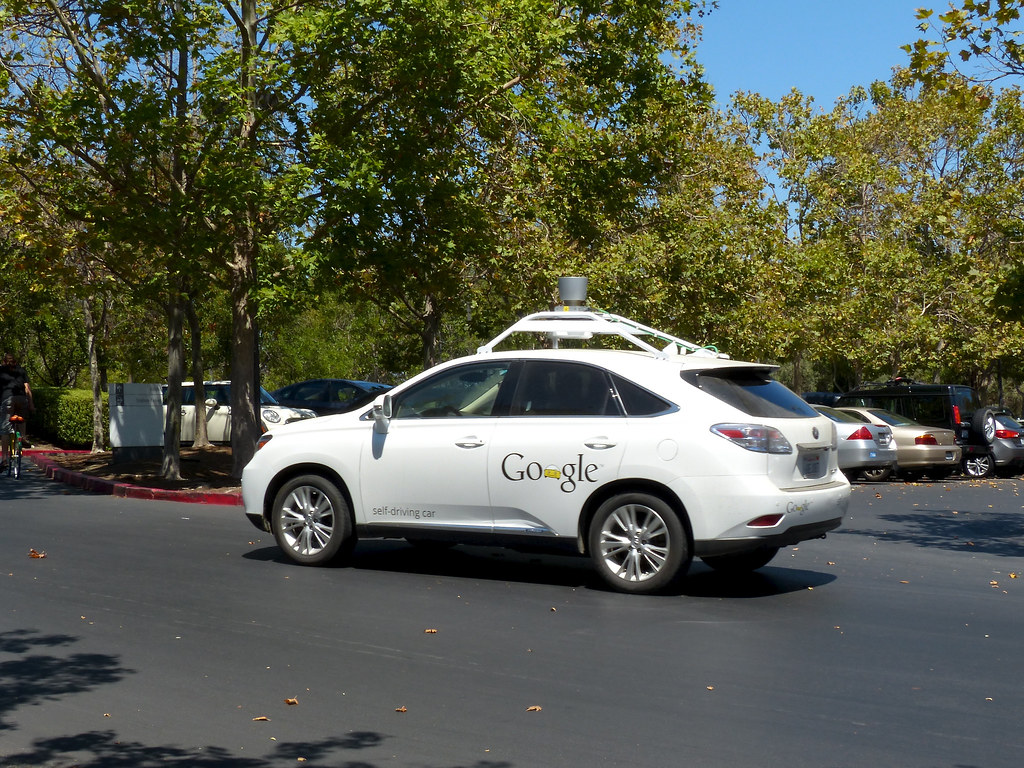
6. **The Unsung Hero: Why Using a Car Depreciation Calculator is Essential**In the complex world of car ownership, where prices fluctuate and values erode, informed decision-making is your most powerful tool. Yet, a common pitfall is that “Most people guess what their car is worth and end up leaving money on the table,” whether buying or selling. This is precisely where a reliable car depreciation calculator becomes an unsung hero, offering clarity and precision in an otherwise murky financial area.
At its core, a depreciation calculator provides a robust estimate of your vehicle’s worth over time. “Our depreciation calculator will give you an estimate. It shows how your vehicle loses value year by year, so you can plan the best time to sell or trade in.” This foresight is invaluable, allowing you to strategically time your sales, compare the value retention of different brands before purchase, and consistently monitor how quickly your investment is diminishing. The beauty of these tools is their accessibility, as they “works for any make or model and updates instantly on mobile or desktop.”
The practical benefits extend to real-life transactions. Consider a personal anecdote shared in the context: “When I sold my 2017 GMC Sierra, I used this exact calculator first. It estimated the value at $25,000 with 160,000 km, and I listed it for $25,500. The truck sold within three days for exactly that. The estimate was spot on and saved me from underpricing it. I had extra money in my pocket, which my wife claimed as her money anyway. What’s mine is hers in the marriage case.” This illustrates how a precise estimate can translate directly into tangible financial gains, preventing you from shortchanging yourself.
The utility of such a calculator isn’t limited to selling; it’s equally powerful for buyers. “It’s also useful when you’re buying. I once looked at a 2019 Hyundai Tucson listed for $29,000. The calculator showed the fair market value was closer to $27,500. I used that to negotiate and got the price down by $1,200.” This demonstrates how having objective, data-driven insights provides leverage in negotiations, ensuring you pay a fair market price and potentially saving you a significant sum right at the point of purchase.
Ultimately, a car depreciation calculator serves as an essential financial planning instrument. “You can also use it to track how fast your car’s value is dropping, plan future purchases, or calculate the real cost of owning a car per year.” It’s a versatile tool that empowers both sides of the transaction, benefiting “both sides — buyers and sellers.” The advice is clear and actionable: “Before you list your vehicle or walk into a dealership, use this calculator first. It will give you the numbers you need to make a fair deal. In fact, open this calculator at the dealership when trading in your car.” This underscores its role as a vital resource for navigating the complex financial journey of car ownership with confidence and intelligence.
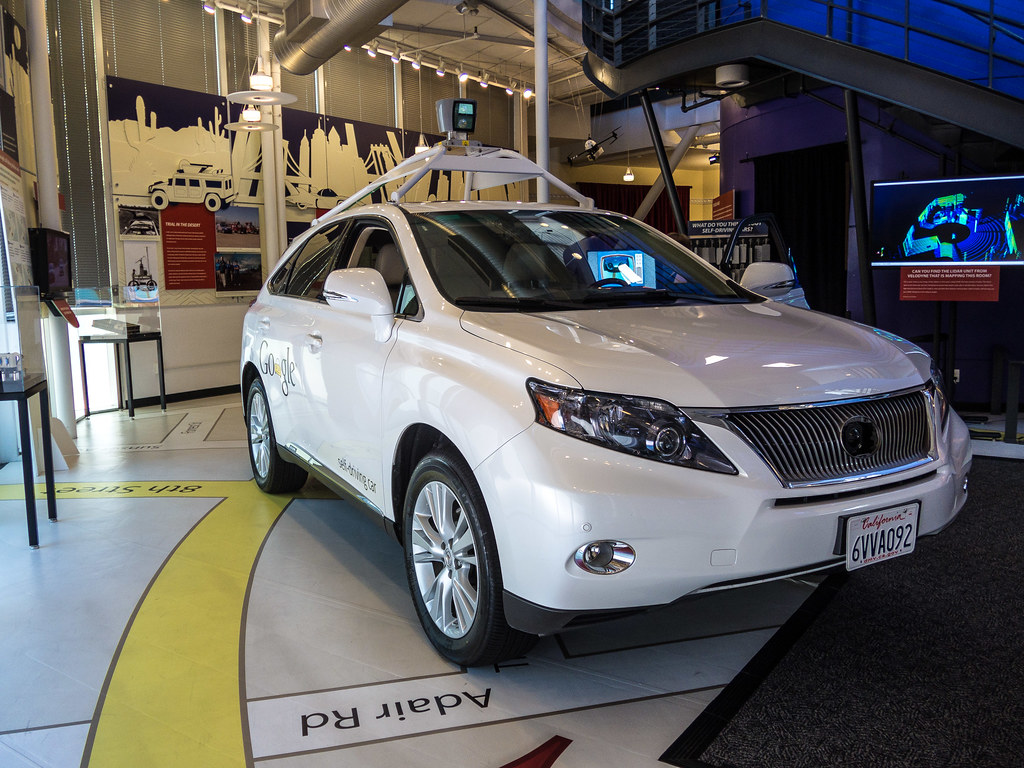
7. **Which Cars Depreciate the Least?**Understanding car depreciation isn’t just about identifying losses; it’s about recognizing opportunities for smarter investments. While the average vehicle in the U.S. depreciates by about 50.2 percent over five years, extensive research by firms like iSeeCars reveals that some models are remarkably resilient. These stand out as smart choices for those looking to mitigate the long-term financial impact of depreciation.
Jeep’s Wrangler Unlimited and Wrangler consistently top value retention charts, celebrated for durability, performance, and enduring popularity among consumers. Beyond these Jeep icons, the list of top performers is largely populated by reliable pickup trucks, a segment that continues to experience robust growth and demand. Models like the Toyota Tacoma, Toyota Tundra, Nissan Frontier, Chevrolet Silverado 1500, and GMC Sierra 1500, alongside the Toyota 4Runner SUV, demonstrate that utility and ruggedness often equate to lasting value.
Further reinforcing these trends, Kelley Blue Book’s Best Resale Value Awards echo similar sentiments, highlighting models that consistently outperform. Toyota’s strong presence on these lists is no coincidence; their brand is synonymous with legendary reliability. Consumers trust that a well-maintained Toyota will deliver dependable service for years, which naturally sustains high demand and, consequently, stronger resale prices in the used car market.
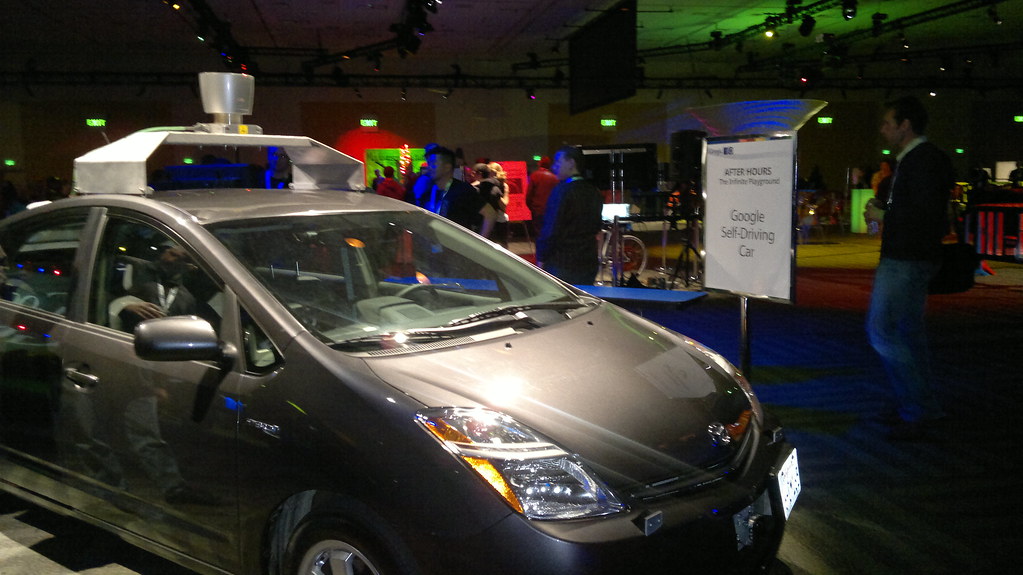
8. **Which Cars Depreciate the Most?**On the flip side of the depreciation coin are vehicles that, unfortunately, shed their value at an accelerated pace. The same iSeeCars research that identified top value retainers also shone a light on the cars that depreciate most significantly over a five-year period. Understanding these trends can be just as crucial for consumers, especially when making purchasing decisions that have long-term financial implications.
Alternative-fuel vehicles frequently appear at the top of the fastest-depreciating list, with models like the Nissan Leaf, Chevrolet Volt, and Ford Fusion Energi leading the way. Their rapid value loss is primarily due to government incentives that apply exclusively to new purchases, often distorting their new cost relative to inherent market value. When these incentives aren’t available for subsequent owners, the resale price naturally adjusts downwards.
Secondly, the technology underpinning electric and hybrid vehicles is evolving at a breakneck pace. What seems cutting-edge today can quickly become outdated tomorrow, particularly concerning battery range and charging infrastructure, which reduces their appeal and value in the used market. Another significant category of fast-depreciating vehicles includes luxury sedans, such as the BMW 7 Series, Mercedes-Benz S-Class, and Jaguar XJL. Their high initial price points, coupled with expensive maintenance and a niche market for used luxury, often result in substantial value loss over time.
Read more about: Avoid These 15 Cars Due to Shockingly High Depreciation Rates

9. **New vs. Used: A Depreciation Perspective**One of the most enduring debates in the automotive world centers on whether it’s financially wiser to buy a new car or a used one. From the strict viewpoint of depreciation, the answer is almost unequivocally in favor of buying used. A brand-new car experiences its most brutal depreciation hit the moment it’s driven off the dealership lot, losing approximately 9% of its value instantly, with this rapid decline continuing aggressively through its first year of ownership.
When you opt for a used vehicle, you effectively sidestep this initial, steep depreciation curve. You allow the previous owner to absorb the most significant portion of the value loss, acquiring a vehicle that has already taken its biggest financial hit. Our car depreciation calculator, for instance, adjusts its calculations favorably for used cars, estimating depreciation from your purchase price forward rather than the original sticker price.
While new cars certainly come with their own set of advantages—the thrill of being the first owner, the latest technology, and comprehensive warranties—these benefits come at a steep financial premium in terms of depreciation. Many financial experts, including those whose insights we draw upon, advocate for purchasing vehicles that are two to three years old. At this age, cars are still modern, reliable, and equipped with contemporary features, but they have already navigated that initial precipitous drop in value, representing a more financially sound decision.

10. **Key Milestones in a Car’s Depreciation Journey**Understanding the rhythm of a car’s depreciation involves recognizing several critical milestones where value shifts are particularly pronounced. These markers aren’t just abstract points on a chart; they represent real financial thresholds that can inform buying, selling, and trading decisions throughout your vehicle’s lifespan. Being aware of these key moments allows car owners to anticipate and plan for the inevitable decline in their asset’s worth.
The most immediate and arguably the most impactful milestone is what’s known as the “Drive-Off Drop.” This refers to the startling fact that a new car loses around 9% of its value the instant it leaves the dealership. This instantaneous reclassification from ‘new’ to ‘used,’ despite minimal or no actual wear, marks the beginning of its depreciation journey with a significant and often painful financial hit. Another crucial benchmark occurs around Year 3 of ownership, often coinciding with the expiration of many factory warranties, as diminishing coverage can accelerate depreciation.
As a car ages further, the 8.4-year mark holds significance as, according to iSeeCars.com, this is the average length of time a new car buyer retains their vehicle before selling or trading it in. Beyond this, into the 10 to 15-year range, it enters a phase of “Extended Depreciation.” While vehicles continue to lose value, the rate often slows down to a more stable 3-4% annually. At this point, the car is typically approaching or has become a “fully depreciated asset,” meaning its market value is extremely low, and the financial loss due to depreciation has largely run its course.
Read more about: Unlock $150+ Monthly Savings: Your Essential Guide to Smart Auto Loan Refinancing

11. **Electric Vehicles and Their Unique Depreciation Trends**Electric vehicles (EVs) represent a rapidly growing segment of the automotive market, and while they offer numerous benefits, their depreciation patterns can diverge significantly from those of traditional gasoline-powered cars. Research initially indicated that alternative-fuel cars, including early hybrids and EVs, tended to depreciate faster than conventional vehicles. This trend was primarily attributed to specific market dynamics and technological factors.
Two main reasons underpin this accelerated depreciation for many alternative-fuel vehicles. Firstly, the availability of government incentives and subsidies for new EV purchases can distort the market, making the resale value of a used EV less attractive when those incentives are no longer applicable to the second owner. Secondly, the rapid pace of technological innovation, particularly in battery technology, means that older EV models can quickly become outdated in terms of range, charging speed, and overall performance, which reduces their appeal and value.
However, it’s important to note that the landscape for EV depreciation is evolving. As battery technology matures and becomes more standardized, and as the used EV market gains more liquidity, some newer EV models are beginning to show stronger value retention. For instance, cars like the Tesla Model 3 or Model Y have demonstrated an ability to hold their value better due to high demand and continued technological relevance. Despite these shifts, it remains crucial for potential EV buyers and sellers to be aware that standard calculator rates, designed for combustion engines, may sometimes overestimate EV values in their early years.
Read more about: Unlocking Dealership Gold: 15 Proven Strategies Car Dealers Use to Maximize Profit on Every Sale and Secure Their Future
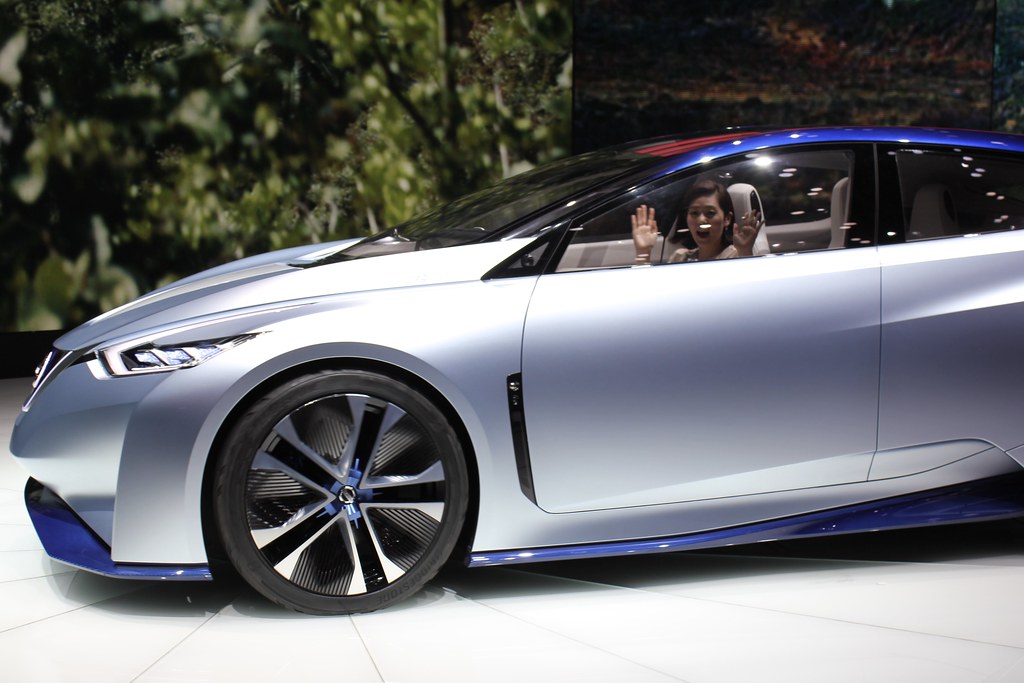
12. **Real-World Experiences and the Limits of Averages**While statistical averages and powerful depreciation calculators provide invaluable guidance, real-world experiences often underscore the nuances and sometimes surprising deviations from generalized trends. My own driveway offers two compelling examples that illustrate how individual vehicle characteristics, market demand, and even personal driving habits can significantly alter a car’s depreciation trajectory, defying conventional expectations.
My 2016 Mercedes Sprinter Van stands as a testament to how certain vehicles can remarkably defy the standard depreciation curve. Despite its age, I could potentially sell it for very close to its original purchase price of $49,000. This impressive value retention is not a fluke; it’s a direct result of the incredible demand for Sprinter vans in both the commercial sector and the burgeoning “van life” community. Their combination of reliability, expansive cargo capacity, and inherent versatility makes them highly sought after.
Conversely, my 2009 Ford Ranger pickup truck tells a different, yet equally instructive, story. With well under 60,000 miles on the odometer, this truck, by most measures, should be considered a fully depreciated asset. While its market value is indeed quite low, the silver lining is that I’m now essentially driving it for free, at least in terms of depreciation costs. Every mile added to the Ranger no longer contributes to a significant loss of equity, shifting the financial burden entirely to maintenance and insurance.
**Making Informed Choices for Your Automotive Future**
Navigating the financial landscape of car ownership can feel like a complex puzzle, but by thoroughly understanding depreciation, you gain a powerful advantage. From the moment a car leaves the lot, its value begins to change, influenced by a myriad of factors from mileage to market demand. Whether you’re considering a new electric vehicle, a trusty pickup truck, or weighing the merits of buying new versus used, an informed perspective on depreciation is your ultimate guide.
Read more about: Unleash Your Power: The Ultimate Rundown of Top-Tier Gear and Performance Boosts Across Gaming and Mobile Tech
The insights provided, from identifying vehicles that hold their value best to understanding key depreciation milestones, are designed to empower you. Remember, depreciation is often the largest cost of vehicle ownership. By leveraging tools like the car depreciation calculator and recognizing that real-world scenarios can offer unique outcomes, you can make strategic decisions that save you thousands of dollars throughout your driving lifetime. Drive smart, invest wisely, and let your financial future be as smooth as a freshly paved highway.


